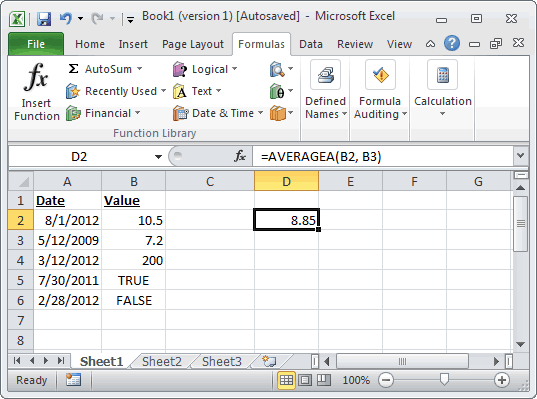Description
The Microsoft Excel AVERAGEA function returns the average (arithmetic mean) of the numbers provided. The AVERAGEA function is different from the AVERAGE functionin that it treats TRUE as a value of 1 and FALSE as a value of 0.
Syntax
The syntax for the AVERAGEA function in Microsoft Excel is:
AVERAGEA( number1, [number2], ... [number_n] )
Parameters or Arguments
- number1, number2, ... number_n
- Numeric values - they can be numbers, named ranges, arrays, or references to numbers. There can be up to 30 values entered.
Applies To
- Excel 2016, Excel 2013, Excel 2011 for Mac, Excel 2010, Excel 2007, Excel 2003, Excel XP, Excel 2000
Type of Function
- Worksheet function (WS)
Example (as Worksheet Function)
Let's look at some Excel AVERAGEA function examples and explore how to use the AVERAGEA function as a worksheet function in Microsoft Excel:

Based on the Excel spreadsheet above, the following AVERAGEA examples would return:
=AVERAGEA(B2, B3)
Result: 8.85
=AVERAGEA(B3, B5, 45)
Result: 17.73333333
=AVERAGEA(B2:B6)
Result: 43.74
=AVERAGEA(B5, B6)
Result: 0.5
No comments:
Post a Comment